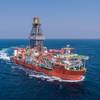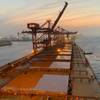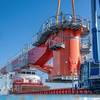Slide Fuel-Valve a MAN Success Story
First introduced at the turn of the millennium, MAN PrimeServ – MAN Diesel & Turbo’s service division – recently retrofitted its 20,000th slide fuel-valve.
Christian Ludwig – Head of Retrofit & Upgrade – MAN Diesel & Turbo, said: “Slide fuel-valves have proved to be very popular within the marine, two-stroke market. Really, it’s a case of having introduced the right technology at the right time and the slide fuel-valve’s strong market performance is testimony to the fuel savings and increased environmental profile it brings to working vessels. It is important to note that slide fuel-valves improve the low-load operating capability of engines.”.
Slide Fuel-Valves
Slide fuel-valves come as standard on all new MAN B&W engines but can also be retrofitted on MC engines. The slide fuel-valve eliminates the so-called ‘sac volume’, which reduces fuel-oil consumption and, furthermore, eliminates dripping from the fuel-valve nozzle.
Compared to conventional valves, the slide fuel-valve has NOx-reduction potential. The reduced sac volume leads, by nature, to an improved combustion process, resulting in fewer deposits throughout the gas ways and a reduction in overall emissions, such as HC, NOx and particulate matter. Furthermore, visible smoke conditions are also greatly reduced as a result of the improved combustion.
Conversely, engines fitted with slide fuel-valves have, due to improved low-load performance with regard to soot formation, a significant advantage in an era where ‘slow steaming’ (sailing at part load) has become the industry norm. This reduces/eliminates the need to run at high revolutions in order to clean exhaust channels.
Retrofitting and benefits
The procedure for replacing standard valves with slide fuel-valves is straightforward and can be carried out by ship personnel after instruction or MAN PrimeServ as required. Fitting the new valve type brings many benefits to the table, including:
• Improved low-load performance
• Better combustion process
• Reduced fouling of gas ways and exhaust-gas boiler
• Reduced fouling of piston top land
• No drips – no sac volume
• Less visible smoke formation
• Lower HC, NOx and particulate matter emission levels











